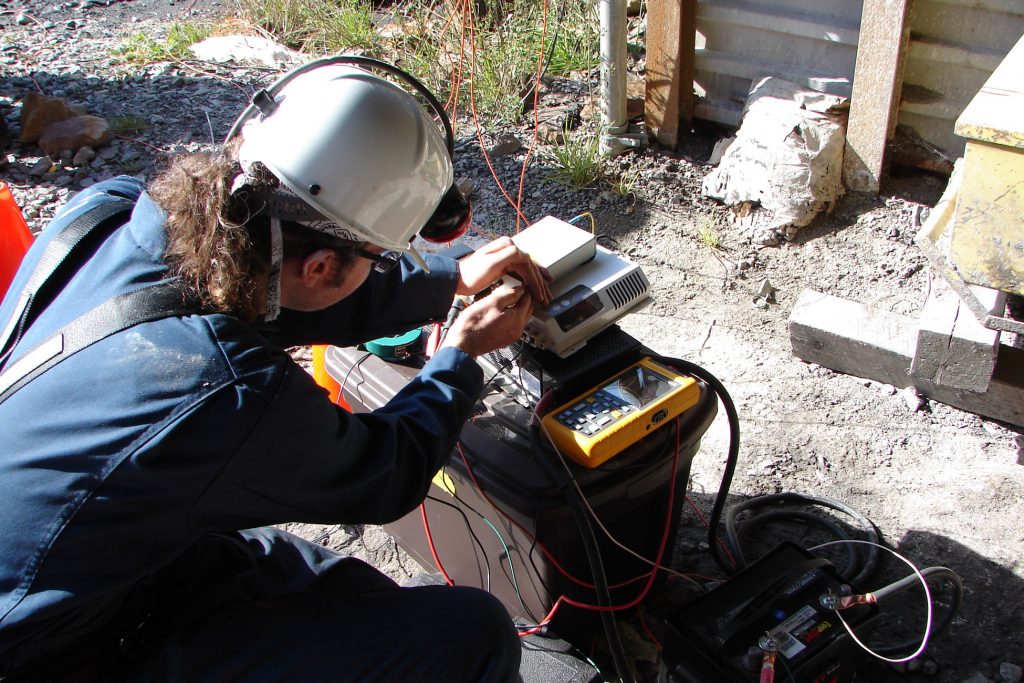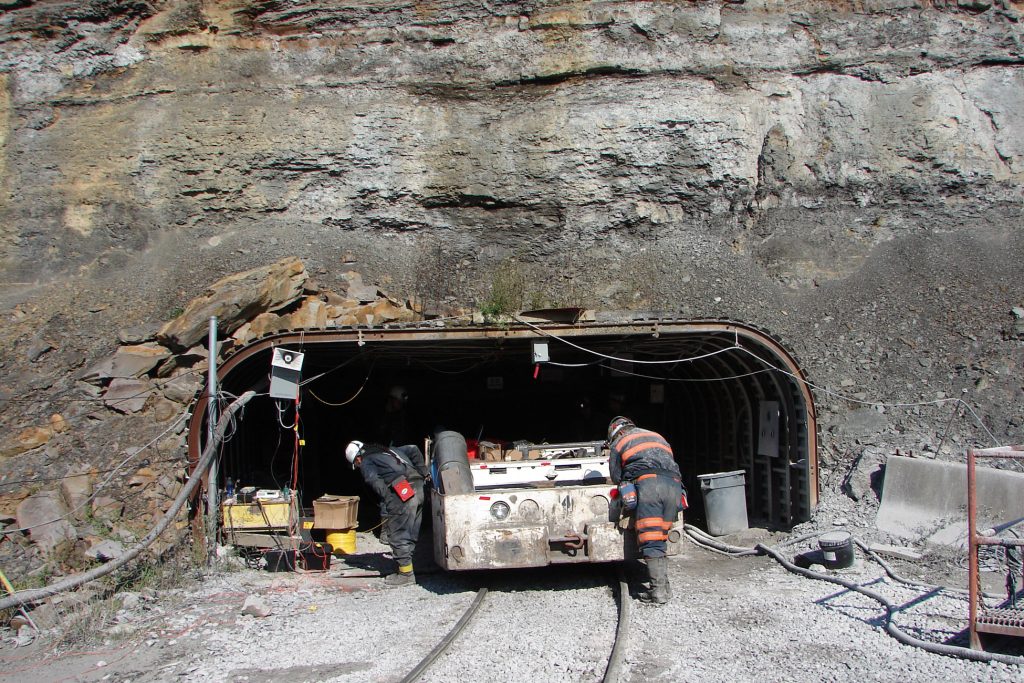
ALBUQUERQUE, N.M. — Findings of a research team from Sandia National Laboratories were a key source of a recently released report by the U.S. Mine Safety and Health Administration (MSHA) indicating that lightning was the likely cause of the explosion in the Sago Mine on Jan. 2, 2006. The disaster killed 12 miners.
As part of its official investigation, MSHA contracted with Sandia to study if energy from a lightning strike could travel underground to potentially ignite an explosive mixture of methane gas trapped in a sealed section of the Sago mine. Three lightning strikes were recorded by national detection networks, along with eyewitness accounts of other strikes nearby the mine, just prior to the explosion. The bolts struck simultaneously with the explosion that was registered by nearby seismographs.
Sandia is a National Nuclear Security Administration (NNSA) laboratory.
Operations at the mine were officially idled in late March by mine owner International Coal Group Inc. A small crew remains employed at Sago to maintain the mine infrastructure.
In early November a Sandia team took its monitoring test equipment across the country to the Sago Mine, located near Buckhannon, W.Va. They spent 10 days analyzing the likelihood that electric current produced by a lightning strike could transmit effects deep into the coal mine.

Their findings became part of the final MSHA accident investigation report delivered to members of Congress on May 9.
“We never expected to discover a smoking gun, but we came as close to this as you can in this type of investigation, ” says Larry Schneider, senior manager of Sandia’s Pulsed Power Technology Department. “However, we pursued and characterized a coupling mechanism that the team of accident investigators hadn’t previously considered — that current from a surface lightning strike can generate electromagnetic fields that can readily propagate through the earth, as opposed to current being driven into conductors entering the mine such as metal rails or power lines. Our findings had profound implications.”
MSHA — aware of Sandia’s decades of work studying lightning, particularly how it might impact critical nuclear weapons facilities at the Department of Energy Pantex Plant located outside Amarillo and underground facilities at the Nevada Test Site — asked the team to conduct the experiments and analysis.
“Accident investigators had been suspicious all along that lightning was the cause of the explosion, but there had been no definite proof one way or the other,” says Michele Caldwell, manager of Sandia’s Electromagnetic Qualification and Engineering Department.
Twenty-nine miners were underground at Sago when the explosion occurred. Thirteen were in close proximity to the underground blast when it occurred. One miner died close to the ruptured seal, and 12 others retreated behind a curtain at the working face of the mine in an attempt to barricade themselves against the smoke and carbon monoxide. They awaited rescue there, which would come too late for all but one of them.
With lightning as a potential cause for the Sago Mine explosion, the Sandia team investigated two modes of transmitting lightning energy deep into the coal mine, Caldwell says.

The first mode was direct attachment onto metallic penetrations — such as conveyers used to extract the coal, rails used for transporting people and equipment — and power and communication lines from the entrance to deep inside the mine. The second mode investigated energy propagating through the earth’s surface from the point of a surface lightning strike or overhead arc channel.
“We needed to be able to make measurements without waiting for or triggering a true lightning strike in the vicinity, so we provided our own drive signal,” Caldwell says. “To prevent interference with mine operations or introduction of a safety hazard, we injected a small, continuous signal over a range of frequencies present in a lightning strike as a drive source.”
For the metallic penetrations, the drive signal was applied at the entrance to the mine and signals were measured with current and voltage probes at various points in the mine, as far as two miles in. The drive signal was transmitted by fiber optics to the entrance of the mine as the instrumentation was carried inside the mine to make measurements. The goal was to see how much the signals decreased as a function of the distance from the entrance of the mine.

For measuring propagation of lightning energy from the surface of the earth to the mine cavern 300 feet below, the drive signal was applied to a long wire stretched on the surface. Directly below, inside the mine, an antenna was set up to pick up the transmitted signals. Multiple antenna measurements were made, covering a cross pattern in the mine of about 80 meters by 80 meters. The measurements were compared to analytical models simulating lightning field propagation through the earth.
The data was used to develop transfer functions, a way of understanding how much energy penetrated into the mine based on a surface lightning events. These results were combined with a theoretical lightning strike waveform to determine if voltages get high enough inside the mine to be of concern.
The study concluded that it was highly unlikely that lightning initiated the explosion by traveling along conductors through the mine and into the sealed area. However, electromagnetic energy from a significant lightning event close to the sealed area could travel through the ground at Sago and induce a high voltage into metallic conductors that were left in the sealed section of the mine. A pump cable was left abandoned at the ignition point. This cable was found by MSHA investigators to have many damaged sections that could provide a spark when the cable is subjected to high voltages. A spark is a known ignition source of flammable methane mixtures that can accumulate in sealed sections of mines.
“The results of field measurements and analytical modeling were clear; lightning can propagate significant electrical energy into mine systems under the right conditions,” says Schneider. “The team’s work at Sago was only a brief, but powerful look into this effect. We need to better understand this phenomenon in the variety of scenarios seen in the US mining system and bring to bear other state-of-the-art tools, including our advanced computing capabilities. I can readily envision this leading to additional, reasonable preventative measures to reduce the probability of such a catastrophic event in the future. This is an important message.”
Schneider says he is grateful for Sandia’s relationship with MSHA.
“I need to compliment MSHA for their engagement of Sandia,” he says. “The techniques we used in our work for them were not generally understood outside of the nuclear weapons community. It took technical insight and courage on their part to embrace this work. We’re very pleased that Sandia played an important role in this investigation.”
MSHA’s investigation report of the Sago Mine accident is online at www.msha.gov.



